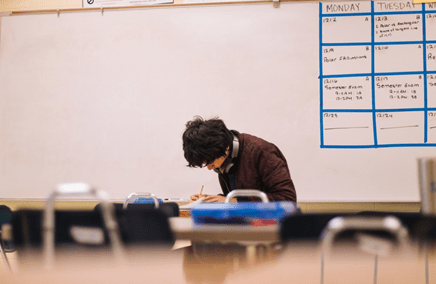Teaching to Read the Right Way: The Social Impact of Science-Based Literacy Education
Within the past month, political statements on the importance of science-based literacy education have made headlines. Last week, New York City’s incoming school chancellor David Banks announced that the city’s school district has been teaching reading the wrong way for 25 years. By focusing on balanced literacy, Banks said, N.Y.C. schools’ reading instruction has been especially ineffective among low-income students. Similar observations by the Avoca School District 37 of Illinois persuaded the Illinois Association of School Boards to lobby for legislation to strengthen science-of-reading education for elementary teachers. By appealing to state legislators to invest in “scientifically proven methods of reading,” these political moves are shaping the trajectory of literacy education, particularly for students of color, those experiencing poverty, and all students impacted by an unfounded allegiance to balanced literacy.

In Illinois, where Avoca D37 is pushing to license more elementary school teachers in the science of reading, average reading test scores are significantly lower among Black and Hispanic students and those who qualify for the National School Lunch Program. Race and economic gaps in reading scores are partially attributable to Illinois’ longtime emphasis on balanced literacy, based on the observations of Avoca Superintendent Dr. Kaine Osburn and other educational leaders. Instead of teaching phonics - how to recognize and ultimately decode letters by sight and sound - many Illinois educators still teach the whole-language approach of balanced literacy. While this may work for intermediate readers, it rarely benefits students with limited access to high-quality reading materials, students with dyslexia, and/or those learning English as a second language. By simply sprinkling phonics into balanced literacy education and allowing poor reading skills to go unaddressed, reading gaps between students of different socioeconomic backgrounds will continue to widen, sometimes beyond the point of remediation possible for an individual teacher to address.

In New York City, home to the nation’s largest school district, school chancellor Banks addressed these gaps and urged educational leaders to make the long-awaited shift to reading instruction based on phonics. Under balanced literacy instruction, less than 30 percent of New York City fourth graders were proficient in reading, according to 2019 federal data, and 65% of the city’s Black and Brown students are not reaching proficiency. Yet Banks made it clear that reading is a code that all students can be taught to crack, with substantive federal funds and supportive teachers who understand how students’ brains work when learning to read.
In response to Banks’ statement, Juliana Worrell, chief schools officer of the Uncommon Schools public school network, wrote that the legislative moves envisioned by Banks are essential to ensure that literacy education pulls directly from the science of reading. In the Uncommon Schools network, for instance, educators are required to complete up to 70 hours of literacy training this year, with a focus on the different brain regions engaged in the process of reading. Worrell also stressed the need for students to have consistent access to rich, complex, and culturally responsive texts, opening them up to a broad range of experiences and identities. These three key commitments - science-based reading instruction, well-trained and supported teachers, and rich, culturally-responsive texts for young students - are essential to improving structured literacy education and eliminating reading gaps between students of varying socioeconomic backgrounds.

Take-Aways:
- Many school districts have been teaching balanced literacy for decades, denying students access to quality structured literacy education based on phonics and reading science.
- Recent efforts by the New York City school chancellor and the Avoca 37 School District in Illinois highlight the necessity of science-based reading instruction to increase reading proficiency among students of color, students with reading disabilities, and/or students experiencing poverty.
- Based on these efforts, it is apparent that science-based reading instruction, well-trained and supported teachers, and rich, culturally-responsive texts are essential for eliminating historical reading gaps.
Start Teaching Reading for Free Now!
Access Level 1’s four interactive stories and the accompanying supplemental resources to teach elementary students how to read. No credit card is needed. Join the 42,635 teachers and students using our reading program.
